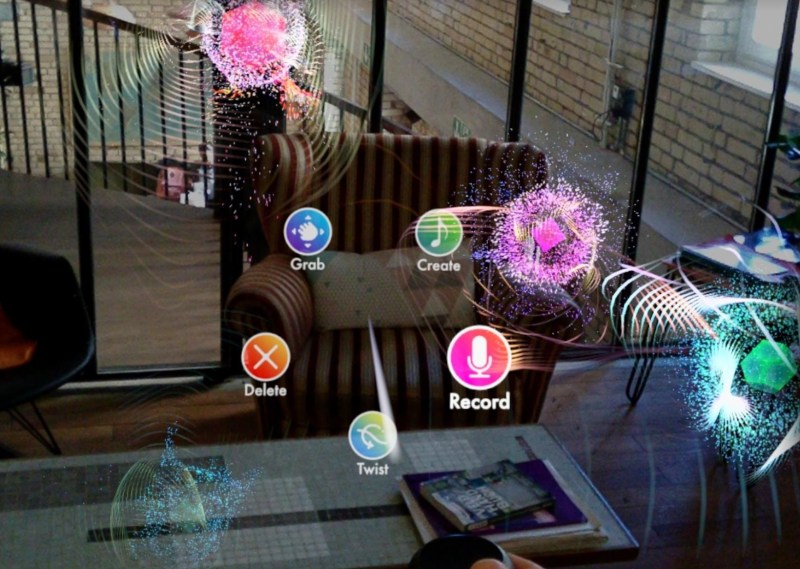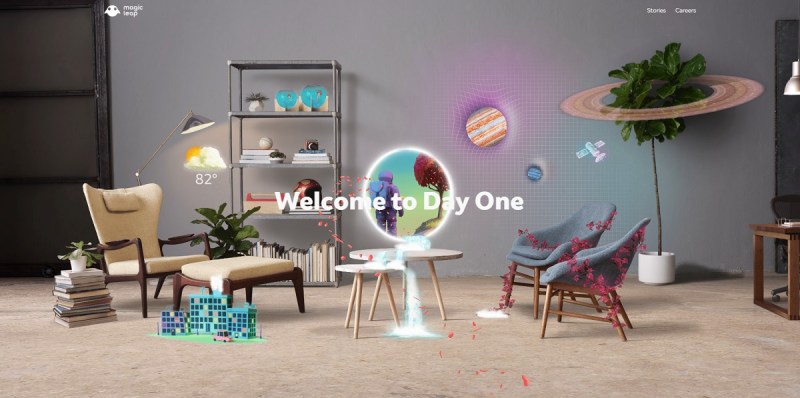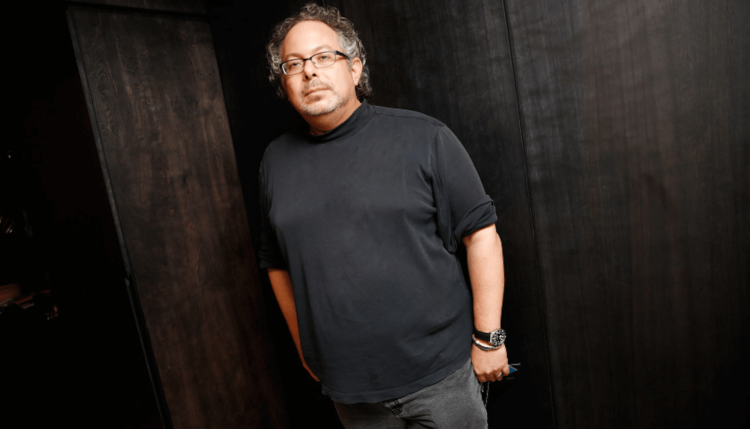
Above: Sennheiser and Magic Leap One.
VentureBeat: Are there some details there? I assume you want two-way communication to be more important than one-way.
Abovitz: Oh, yes. Massively multi-person two-way. Everybody gets together for Thanksgiving once a year. Whole families get together in the same space sharing emotions, gaze, and body language. The ability to have that every day, anywhere you want, breaking down those physical boundaries, that’s what we’re talking about. Not just two-way. It’s volumetric. It’s co-presence. It’s any time, anywhere.
What’s interesting is the combination of data and compute together, and the ability to put in the privacy and other architectural elements within those networks. Some of these things have been around for decades, where we trust them to pass our personal data back and forth, and they’ve respected that. It’s a different class of people. Some of the older, more established institutions that have built trust with the consumer and the population are interesting players in this world. There’s intimate volumetric massive data that’s coming, and you want to work with trust. You want to work with new forms of trust around that data. We’re new, and we get to start what we’re doing with players that have established trust, versus doing something where you’re effectively new and unfamiliar.
VentureBeat: So, it’s the opposite of heading toward a surveillance society where this is a part of that whole system of watching everyone.
Abovitz: You’re nailing something important. I believe there are multiple views of what this world looks like. What we call a Magicverse is our particular view that it should be a positive, decentralized, very person-friendly, community-friendly version of these postulations about a new society. There are other countries in other parts of the world that we won’t work with. They may have very dark, controlled views of what to do here.
There needs to be debate and discussion. People need to know what they’re signing up for, what’s happening here, and how they know they’re working with something that will be a force for good. We have to be very up-front, transparent, policy-based, and even architect and design away the possibility for corruption and misuse. That’s not an easy task, so we’re publicly stating that that is what we’re doing and why we’re here.
There will be another side, other companies and maybe other countries that don’t go down that path. Just like there’s democracy and totalitarianism, there will be these different forms. We want to at least have the media world saying that there are different forms. There are different societies to choose from, and people need to be aware of that. The technology does not mean it goes dark. The way it’s used, the rules, the architectural design define that.

Above: Star Wars Project Porg comes to Magic Leap One.
VentureBeat: Some people might look at this and say that it’s nice you’re thinking big, but can you also get me a product in my hands tomorrow? How do you balance that vision and practicality?
Abovitz: The short answer is, people can actually get a product in their hands tomorrow. We have people who are stitching together — we’re encouraging developers to build — you can already have multi-person interactions in spatial computing with Magic Leap One right now. The next six-to-nine months, you should spend time getting your basics right. If you want to develop or build for that world, you need to learn how to build at room scale. Get two people right. We’ll be putting out tools this spring and summer and fall and winter on a continuous basis that enable more capabilities.
Right now, we’ve put up so many tools that the average developer working is tapped into maybe 10 or 20 percent of the capabilities. Some of our flagship developers, like Greg Broadmore at Weta, they’re using a lot. Lucasfilm used a lot. With things they do, they interact with IoT, and you can have all kinds of amazing things happening. Some developers are still at Hello World and a ball bouncing on a table. Others are almost feature film-level amazing things they’re doing. We keep putting more and more tools, and we’ll continue to do so. All of that is with the thought of giving you the skill set as a developer to become a Magicverse developer.
When we announce partnerships happening in this city or this country, that will be a massive call for developer energy, for the volume of software and coding and experiences that need to be built. Omar has this metaphor of, if you were in a satellite orbiting the earth, as these cities and countries come online, it’ll be like watching the world light up. You’ll begin to see Magicverse entities light up and get connected.
If you had that vision right now, you’d be looking at California, and there’s a teenager on the block in a garage working with an ML1 building something. But we’ve already seen teams forming in 10 different cities, all working together as avatars to build stuff, very quickly. We’re seeing all that happening. We keep feeding those tools. By sharing the tools and the vision with them, they’re becoming the builders.
If you want to compare to colonizing Mars, the first settlers are showing up, and they need to get the 3D printers and the energy sources and start creating the greenhouses so that others can arrive. That’s what our first developer community is like right now. They’re the pioneers building that first infrastructure, creating the toolset to colonize the Magicverse. A year from now, it’ll be really intense.
By the end of this year, we’ll have announced a number of partnerships, including the one next week and all of those will be big hungry vessels for the creative energy of developers. A lot of everyday consumers will want what these developers will build. You may visit Magicverse and dip your toe in the water, but you’re only going to become a colonist if, one, value is delivered but also if trust is built and maintained.

Above: Magic Leap is turning on the lights on its creations for AR.
VentureBeat: There’s going to be a lot of interesting conversations in Barcelona for you, it sounds like.
Abovitz: The group we’re announcing next week has the qualities of a place that will build Magicverse fairly quickly. It’s a population that seems geared up for that. There’s more of those coming. In front of that announcement, it’s important to state what we’re about more clearly and why. We’ll continue to do that. We just have to say it over and over again, expound and bring other folks into that discussion. It requires a lot of openness and engagement.
VentureBeat: Does that suggest that you see this coming up in a spatial way very regionally at first? And then, it all gets connected later? If you had something like, say, Singapore really likes this idea, they could bring their whole region up into the Magicverse. Is that the kind of opportunity you see?
Abovitz: I’m not only a big believer, but what we practically see is that you’ll have city-scale Magicverses appearing. Within a city, it’ll be first districts and regions, and then, the whole city. Then, cities will be connected. You’ll have all these modern cities connecting into a whole surface. In the next two-to-five years, it’ll be a number of states in the United States lining up, as well as parts of Europe and parts of Asia. Then, they’ll want to interconnect. Within that city, you’ll have amazing things, but as cities interconnect, you’ll have even more incredible things.
To some extent, you’ll have a sort of Kansas to Oz gradient. We’ll have to figure out — if you live in Kansas, outside of Oz, how do you spread some of that? The 5G infrastructures are very city-oriented. The whole technology base is about what you can lay into a modern city with super high speed and edge computing. It’ll act as a function to draw more people into urban centers, maybe more than any other function to date. But they’ll figure out ways to move out the technology into other parts of the country as well.

